#carlos ii of spain
Explore tagged Tumblr posts
Photo

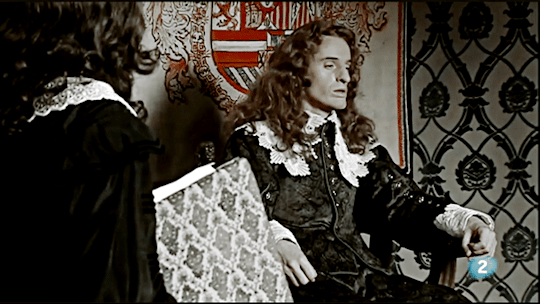

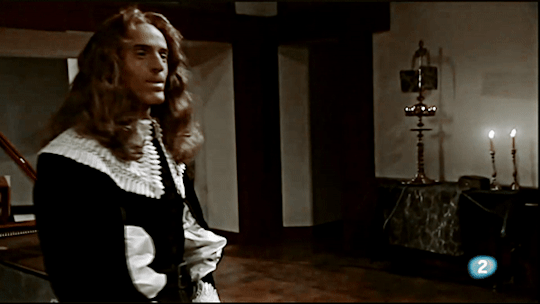

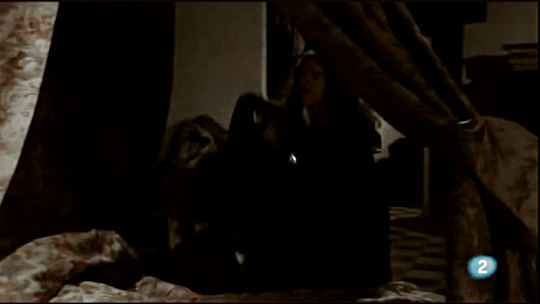


Carlos II of Spain
37 notes
·
View notes
Photo

Sebastián Herrera Barnuevo (Spanish, 1619-1671) Retrato del rey Carlos II de España (1661-1700), hijo y sucesor del rey Felipe IV de España, c.1670 Museo Del Prado
#art#fine arts#spanish art#european art#european history#classical art#carlos ii de espana#carlos ii of spain#fine art#oil painting#traditional art#Sebastián Herrera Barnuevo#monarchy#mediterranean#europe#europa#european#king#spanish king#arts#blonde#male#portrait#putti#putto#cherubs#cherub#angel#angels#christendom
55 notes
·
View notes
Text
The Birth of Charles II of Spain Fanart

Warning: This story contains some artistic license
The Queen's pregnancy was approaching its end and had become a matter of utmost importance. The future of the Monarchy depended on this event. On Sunday, November 6, everything seemed to be ready. The doctors and physicians were on alert; the Queen's confessor was near her, and the Chief Steward of her Household was carefully reviewing the arrangement of the items in the birth chamber. To guarantee the success of the event, all the holy relics that were in the Palace and others brought from El Escorial and other places had been arranged in order. There was the staff of Saint Dominic of Silos that the Order of Saint Dominic had brought, the ribbon of Saint John Ortega, from the Order of the Hieronymites; the incorrupt bodies of Saint Isidore and Saint Diego de Alcalá; the image of the Virgin of Solitude and the one so venerated by the royal family, Our Lady of Atocha. It is not easy to find a space so holy and sacred. Everything, then, was ready, the things of the earth arranged to implore God's pleasure. At noon, after a frugal lunch, Philip IV retired to his chambers. At the same time, While eating, Queen Mariana suddenly felt intense pain in her abdomen, realizing that she was about to give birth. She quickly left the table and hurried to the Tower Chamber.
King Philip went straight to his study while looking at Prospero’s portraits. He entered his study, sat down, and began to write to answer the last letter of Sor Maria de Agreda. He wrote with a deep sigh and tears in his eyes.
“ With the long illness of my son, and the continuous help I was giving in his room, I have not answered your letter of the last month...I assure you that what has most exhausted me, more than this loss, is to see clearly that I have vexed God and he sent this punishment to castigate my sins...
(The king reminisces his cherished memories with Felipe Prospero while writing this letter)
Help me as a friend with your prayers to placate God’s just anger and beg Our Lord that, as he took my son from me, He may make his light shine on the Queen, whose confinement we await hourly, and give her good health and guard what is to be born, if his will, for otherwise I do not wish it...
Back in the Tower Chamber, Queen Mariana cries in agony as she is delivering her baby. The royal midwife Ines Ayala told Queen Mariana to push harder. Five other doctors were present at this event in case of emergency. One of those doctors was Dr Bravo. While the Queen was giving birth, the courtiers and Infanta Margarita looked on.
Ah, Sor Maria, If I had succeeded in following your teachings, perhaps I would not have found myself thus. Pray to our Lord that he may open his eyes, that I may perform his holy will in all things... There is nothing new in the English situation. I, thank God am in good health...
At this point, King Philip was interrupted by a courtier who delivered the news and told the events occurring in the Tower Chamber. King Philip was anxious about the future that lay within a few hours. He prayed heavily to God, asking him to deliver him a son. All could imagine the impatience of the Royal Court of Madrid and Europe, waiting for an outcome of this event. As hours passed, Queen Mariana was still in labor, and the doctors argued over natural forms of treatment. They were anxious as the Queen and the child’s life was at stake.
Dr. Bravo proposed a theory: In the past, Queen Mariana had difficult experiences giving birth to her children. At the birth of Maria Ambrosia, Felipe Prospero, and Fernando Tomas, The Queen had terrible epileptic seizures, and the infants died or lived for a short time. On the other hand, at the birth of Infanta Margarita, the only child to survive, The Queen had been perfectly well. Now why was this? The reason is simple: Just before Infanta Margarita was born, Queen Mariana had suffered several violent nosebleeds. Therefore, what she requires now is to be bled.
Some doctors disagreed, warning that the proposed action could endanger the Queen and her child. Concerned, Queen Mariana asked the doctors if there were any alternative procedures. The doctors offered different opinions, while Dr. Bravo defended his proposal. As the debate continued, Mariana went into labor with the assistance of Ines Ayala. The infant cries and is alive. The birth of the infant brought joy to all. King Philip became a father once again. When the courtier informed King Philip of the birth, he was overjoyed and immediately visited the tower chamber to see his newborn son. King Philip joyfully held his son and proudly showed him to the Queen and his daughter. When the courtier informed King Philip of the birth, he was delighted and immediately visited the tower chamber to see his newborn son. King Philip joyfully held his newborn son and showed him to the Queen and his daughter.
Sources:
Carlos, A king who would not die by John Langdon Davis
Happy Birthday, Charles II of Spain!
#all I did is just combine these stories together#history#mariana de austria#spain#art#charles ii of spain#house of habsburg#17th century#habsburg#carlos ii#please like and reblog#my art#Mariana's art#happy late birthday#sorry it took me so long#my cute baby#margarita#margarita maria#philip iv#look at them#i love them so much#they are so cute#espana#kingdom of spain#madrid spain#monarquía española#spanish empire#baroque fashion#baroque#artists on tumblr
59 notes
·
View notes
Text

@marianadecarlos im calling u mariana in my mind
#charles ii of spain#carlos ii de españa#carlos ii de austria#idk how to tag him#pretty boy ever#im ! very grateful that u took care of me while i was sad#im so sorry that my artstyle is too sketchy - i like it this way bc im in a battle against perfectionism as a perfectionist myself
38 notes
·
View notes
Text
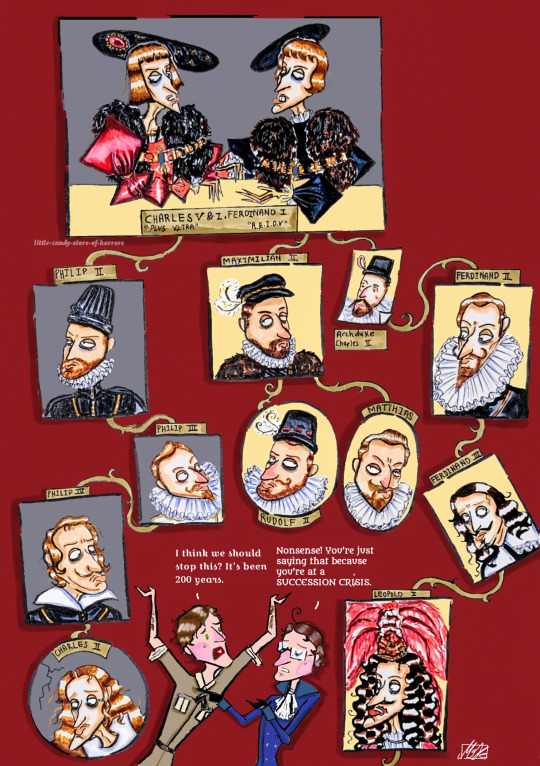
"Bella gerunt alii, tu felix Austria nube!"
Day 6 of @spaus-week 's challenge
"Let others wage war, you, happy Austria, marry!" Was the political strategy of the Habsburgs, and marry did the House of Austria! Infamously, scandalously, sensationally. A mangled wreath of a family tree. We all know this horror story. And we all know the bitter end.
After Emperor Charles V&I divided his Spanish and Austrian inheritance ((also gained through his parents' and grandparents' marriages)) to his descendants and those of his younger brother Ferdinand I respectively, the Habsburg dynasty split into two branches. The Spanish and Austrian Habsburgs notoriously intermarried for generations, right up till Charles II of Spain whose heirless death in 1700 sparked the War of the Spanish Succession. The inbreeding and this informal Latin motto behind it has been blamed to hell and back for their implosion, for the physical ugliness that ran in this royal bloodline. But it is not to say the Habsburgs never went to war, nor that dynastic marriage was a political strategy unique to them! But they were, if anything, bloody successful at it seeing how they did rule half of Europe for 200 years, and then a lot of it in the Austrian line for another 200. Before anyone figured out inbreeding was bad it was considered a privilege to marry into the Habsburgs, with Louis XV claiming that Louis XVI's betrothal to Marie Antoinette was marrying the "Daughter of the Caesars", and Napoleon Bonaparte infamously ditching Josephine for Marie Louise. Charles II was a poor sod who took the fall and the mugs were wretched from the same ugly gene being passed around countless times*, but they did wear power and privilege well.
💅✨ Symbolism bc I'm a NERD and this my Category 10 autism event ✨💅 :
Charles V & Ferdinand I's joint portrait based on that propaganda woodcut, behind them the colours of the Habsburg flag.
The Spanish branch, comprising Charles V & I's descendants, is represented with a black background, and the Austrian branch, comprising Ferdinand I's descendants, gold, both colours pulled from their flag, a dynasty intertwined but split in two.
Round frames denote that the individual had no heirs.
Only the most influential ruler on both sides, the King of Spain and the Holy Roman Emperor, are represented as framed portraits, explaining Archduke Charles II's unframed depiction.
The unconventional placement of Charles II of Spain and Emperor Rudolf II's nameplates are a nod to their queerness: their intersexuality and bisexuality respectively.
Ferdinand III's portrait is lopsided because of the losses of the 30 Years War.
Cracks in Charles II's portrait: 🙃🙃🙃
#Was this just an excuse for me to draw the family tree/wreath? YES. Might continue it to Blessed Karl™ *faints*.#That said i literally took three tries to get the Austrian branch right in just this fraction. Nightmare.#spausweek#Charles v#philip ii#philip ii of spain#Philip iii#philip iv of spain#felipe iv#charles ii of spain#Carlos ii#ferdinand i#Maximilian ii#rudolf ii#Emperor Matthias#Ferdinand ii#Ferdinand iii#Leopold i#16th century#17th century#habsburg history#house of habsburg#austrian history#spanish history#historical hetalia#aph austria#aph spain#roderich edelstein#Antonio Fernandez#Hetalia
69 notes
·
View notes
Text

chares ii of spain my babyy i want to ruffle his hair and kiss him on the forehead–
#digital art#sketch#doodle#charles ii of spain#house of habsburg#habsburg history#original art#artists on tumblr#historical figures#17th century#he's so fun to draw#carlos ii
54 notes
·
View notes
Text

happy birthday charlie you've loved the dubai chocolate or whatever
8 notes
·
View notes
Text
You know I would really like this ship if it wasn't for the fucking incest, man.
#Carlos II de Espada#Maria Luisa de Orleans#charles ii of spain#Marie Louise of Spain#marie louise#I might say this about a lot of history but this is what I get for doing a history exam
10 notes
·
View notes
Text
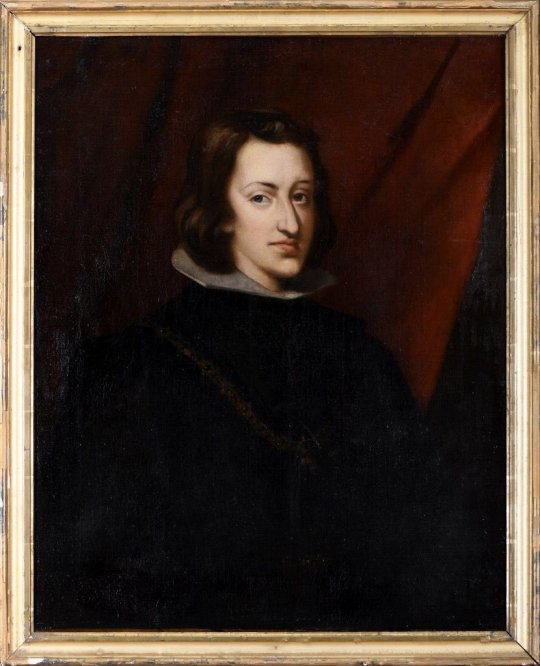
King Carlos II of Spain. Unknown artist.
#monarquía española#reyes de españa#carlos ii#rey de españa#carlos el hechizado#viva el rey#casa de austria#kingdom of spain#house of habsburg#royalty
13 notes
·
View notes
Text
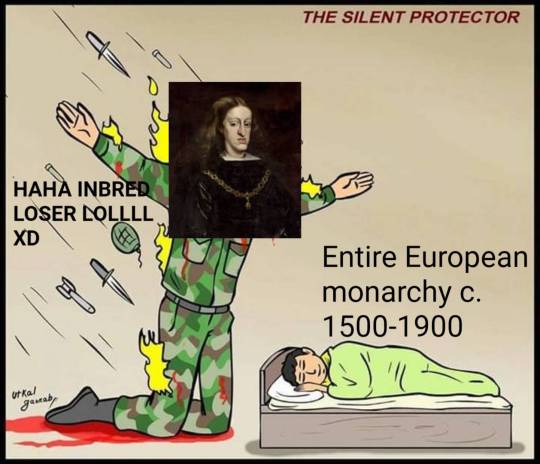
Everyone say thank you Charlie 💅
#charles ii of spain#Charles ii#Carlos ii#17th century#history shitposting#For context:#*oversimplified H*nry VIII voice* “Mary we're ALL inbred!”#History memes#'ew inbred this' 'haha subhuman that' he has taken SO many bullets for this aspect of royal culture lmao#Straight up more powerful than any of u clowns could ever hope to be etc etc#Also ''''culture'''' but like. They didnt know better did they.#Sorry for the rant ive just seen a LOT against him lately and it's rly ticking me off um enjoy the meme!!!!!
70 notes
·
View notes
Text
remade of my Charles ii of spain draw
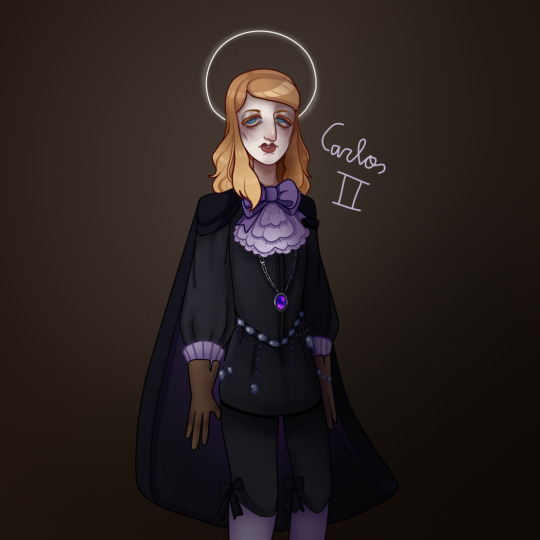
16 notes
·
View notes
Text
His virtue was the brainstorm of a dreamer!
He died a fool. And may his fall pull down
his friend and all his century! We shall see
how they get on without me. For one evening,
the world belongs to me still. [...]
King Philip II of Spain, Don Carlos by Friedrich Schiller, Act V scene ii. Translation by Robert David MacDonald.
#this play is really just so magnificent. might be one of my favorite things ive ever read...#schiller did not fuck around with his european history plays#philip is an extraordinary villain. so compelling#posa was an excellent martyr#carlos is a wonderfully incompetent doomed protagonist#im obsesseddddd#schiller#friedrich schiller#german literature#philip ii of spain#don carlos#poetry#iambic pentameter#blank verse#verse plays#robert david macdonald
16 notes
·
View notes
Text

Lil doodle i did:)
4 notes
·
View notes
Text

Mariana of Austria and Margarita Theresa Fanart
Be warned as some events I wrote had some artistic license.
On the morning of September 17, 1665, the bells tolled throughout the city. Jose Everardo Nithard immediately went to the Queen's chambers. Upon hearing the bells, Queen Mariana awoke and asked what was happening. The courtiers present kissed her hand. Nithard approached her and informed her that the king had passed away. The Queen began to shed a tear but kept her composure. She began to change her wardrobe from extravagant to a simple, rigid mourning dress, with the only adornment on her finger being her wedding ring. Surgeons and attendants were cleaning and embalming the king’s body while a mass was recited at the head of the royal bed. Margarita Theresa, dressed in mourning attire, approached Mariana, hugged her, and wept excessively. Mariana began to cry as she comforted her daughter.
Source: Queen, Mother, and Stateswoman Mariana of Austria and the Government of Spain by: Silvia Z. Mitchell
#I forgot that Felipe's death anniversary was last month#sorry#history#my art#my fanart#historical figures#historical fanart#baroque period#mariana de austria#house of habsburg#habsburg#carlos ii#art#17th century#please like and reblog#spain#mother and child#princess#underrated queen#mourning outfit#tw death#look at them#i love them#they are so cute#ahhhhhh#They are in mourning#so sad </3#margarita maria
59 notes
·
View notes
Photo

Charles II of Spain by Jan Van Orley.
#jan van orley#monarquia española#reyes de españa#carlos ii#rey de españa#viva el rey#casa de austria#carlos ii el hechizado#kingdom of spain#house of habsburg#equestrian portrait
31 notes
·
View notes
Text


Happy ((belated, In Character ™)) to THE poor little meow meow of the Habsburg Dynasty 🥳
Bonus Kitty Boy:

#charles ii#charles ii of spain#17th century#history art#my art#historical fanart#carlos ii#Decided my flirtation with digital art is at its twilight. Not a big fan of this medium anymore but here we are
23 notes
·
View notes